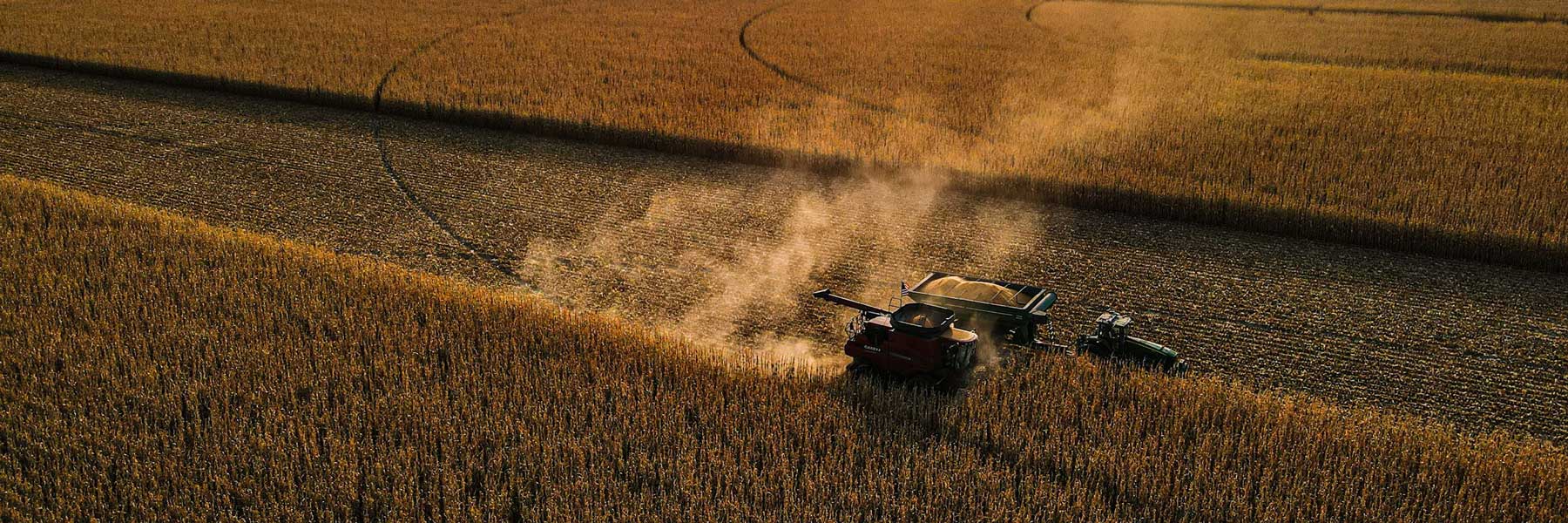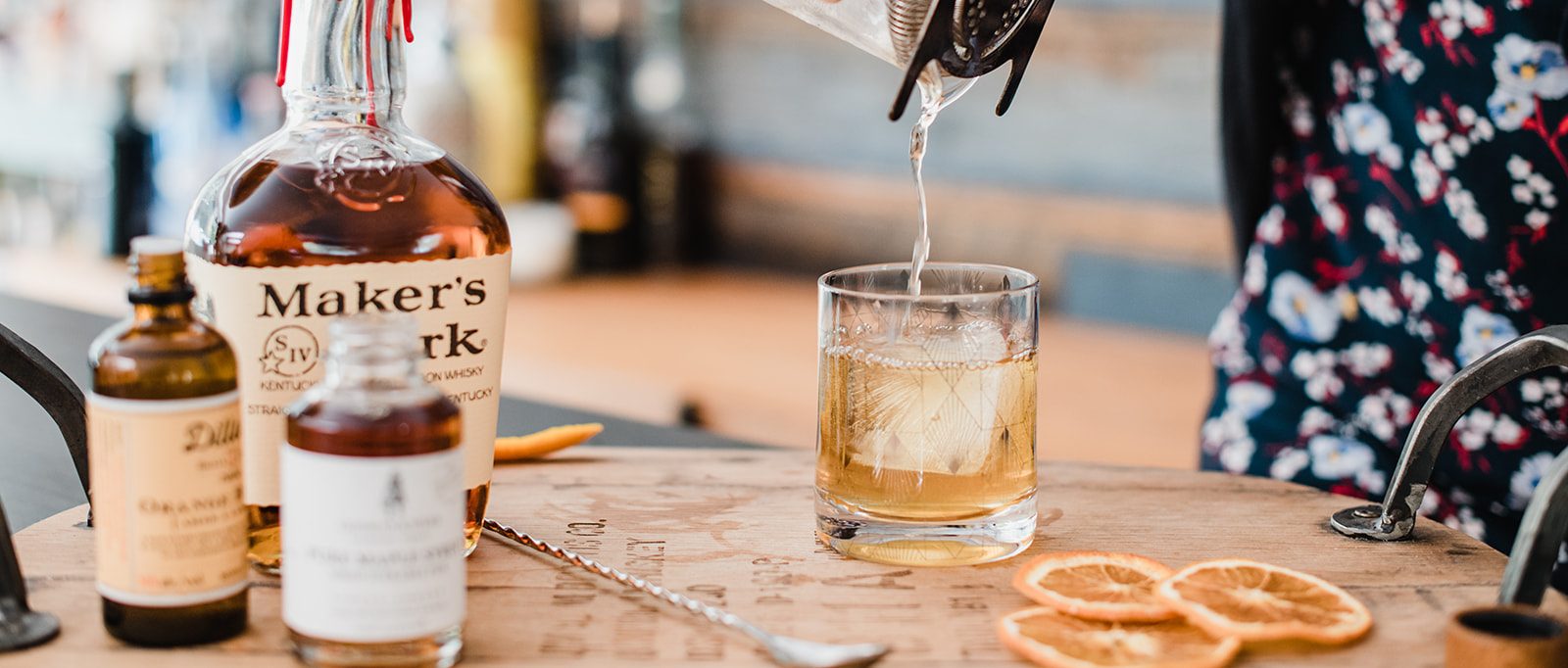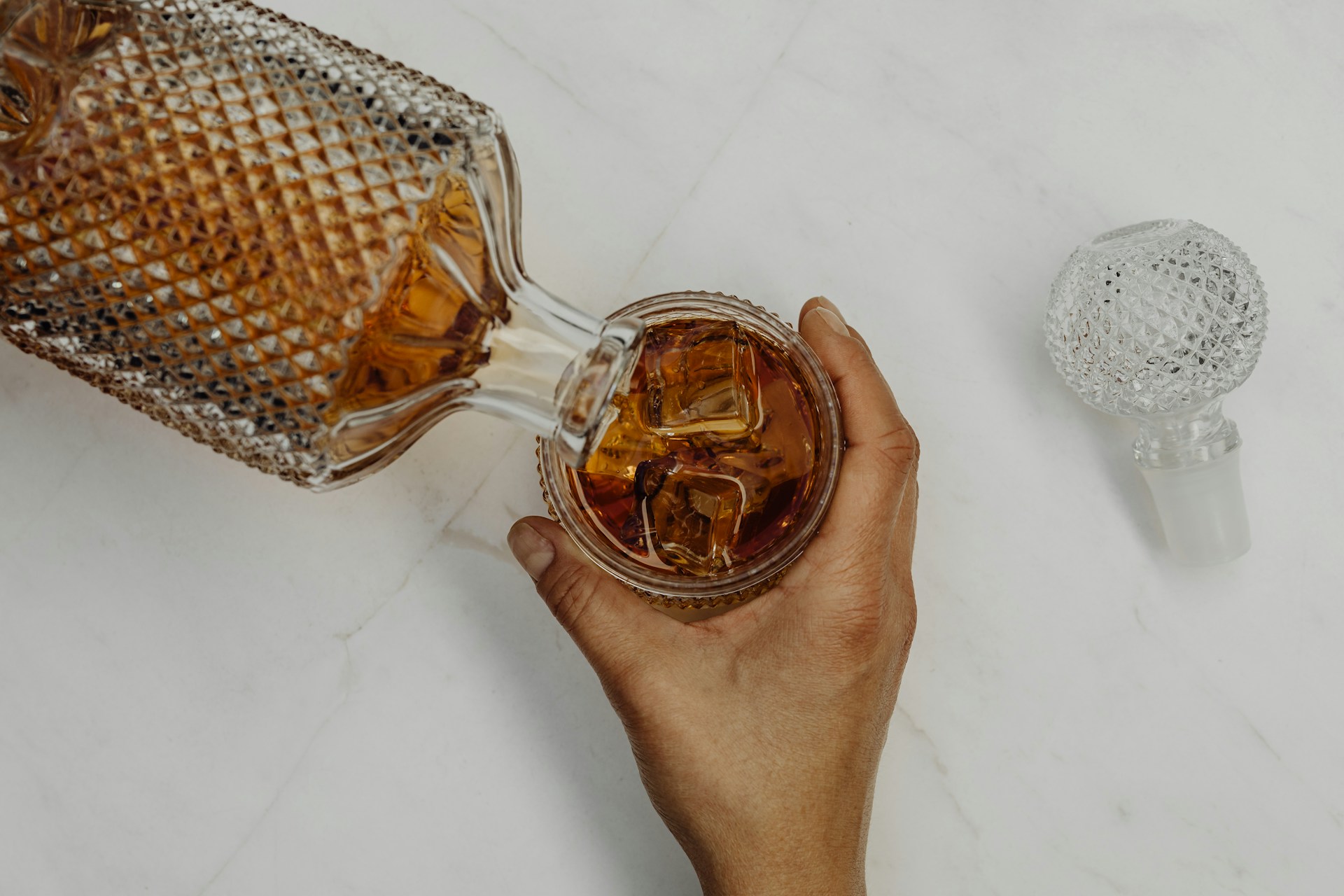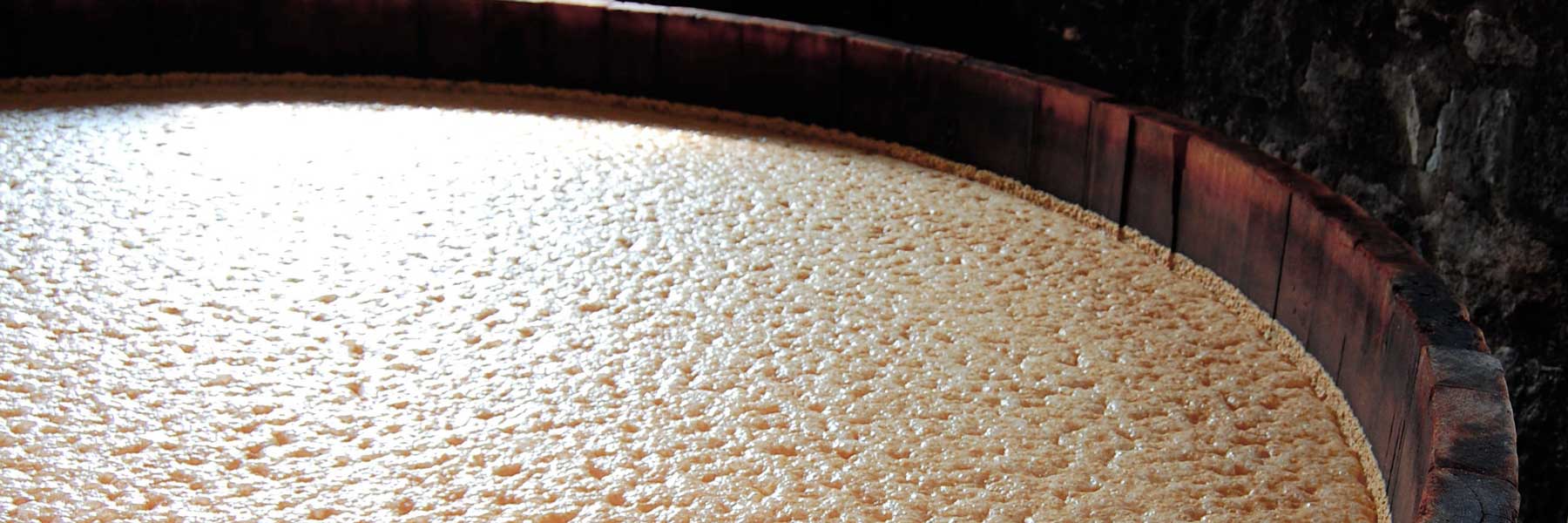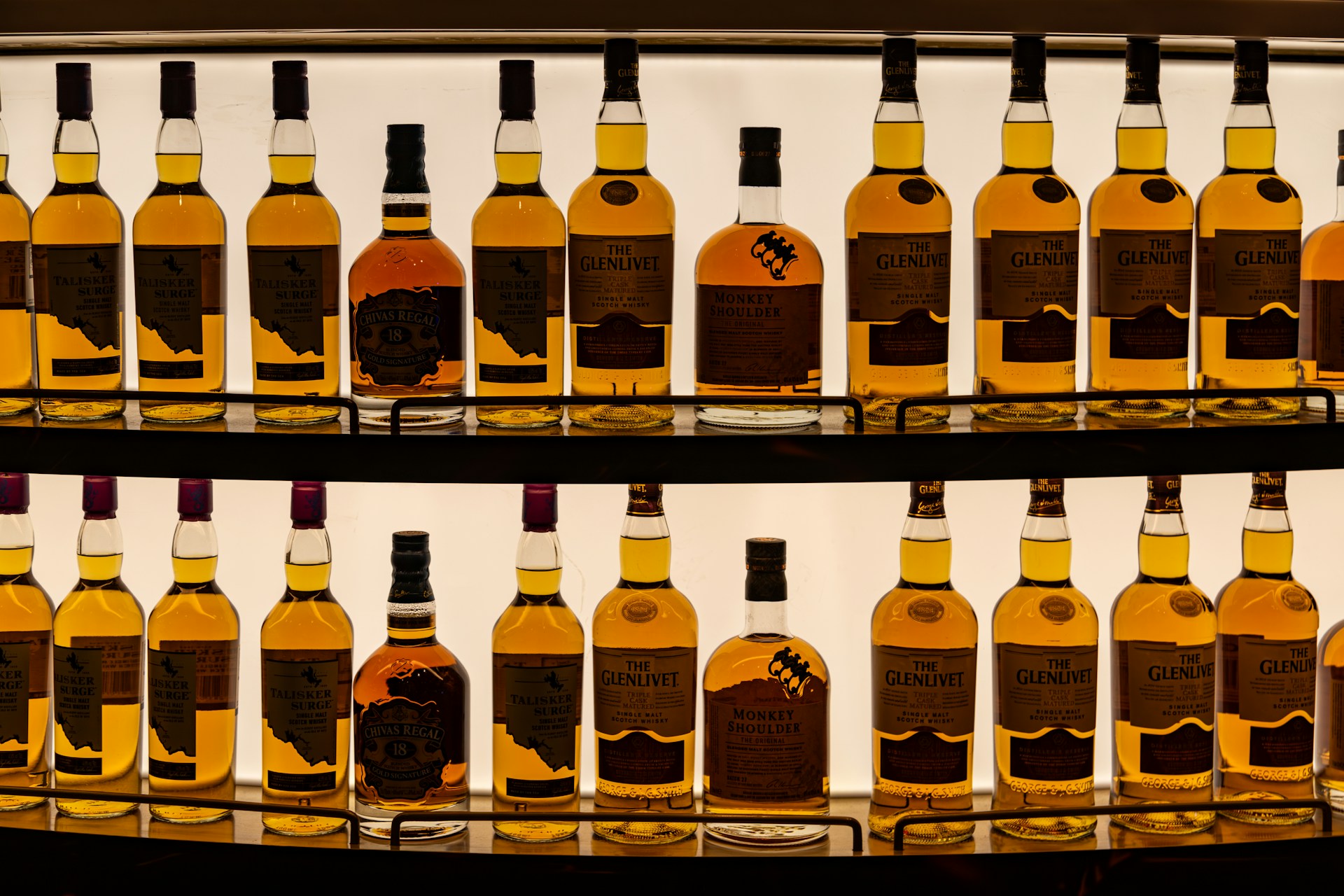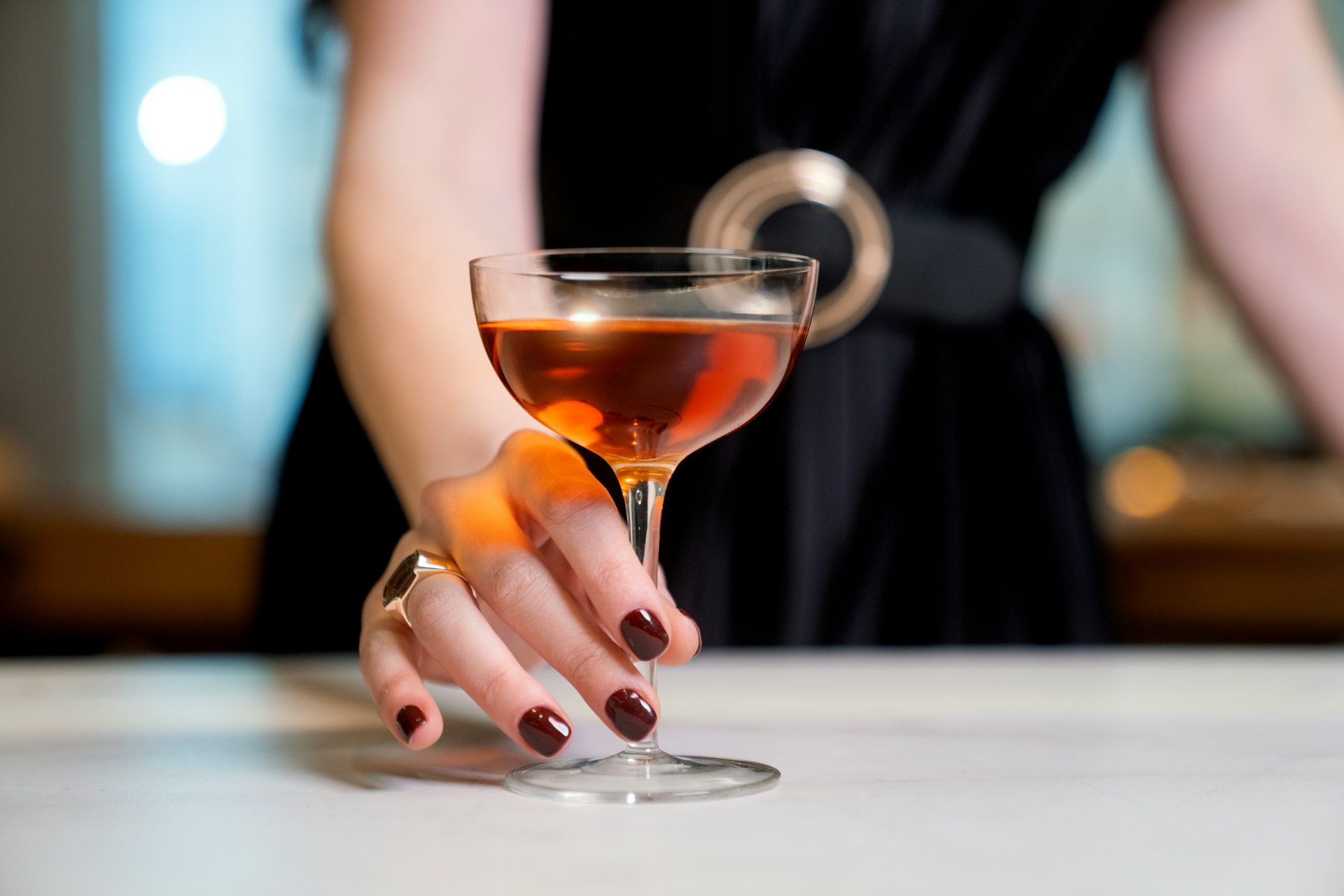What Is Bourbon Made From?
Last updated on August 14th, 2024
Bourbon, a sub-type of American whiskey, is made from a mixture of water, yeast and a minimum of 51% corn (maize) in the mash bill typically including a small percentage of malted barley to aid fermentation. Other additional cereal grains such as rye or wheat are often used to complement the corn, contributing to the whiskey’s rich profile.
Because bourbon has such a strong association with the American south, it’s a common misconception that bourbon only hails from the state of Kentucky. But in reality, bourbon can be produced anywhere in the U.S. The connection between the county of Bourbon in Kentucky and the whiskey’s name is a nod to the region’s historical influence on this beloved beverage.
For a better understanding of this type of American whiskey, you can explore its definition, mash bill ingredients and production process in the sections below.
What is bourbon made from?
Bourbon must be made with a mixture of grains, predominantly corn whiskey, and aged in new charred oak barrels. These barrels impart an unmatched depth of flavor and complexity. Kentucky bourbon, a term often used to describe bourbon produced in the state, is just one of the many expressions of this versatile whiskey. The bourbon industry continues to innovate, offering a range of flavor profiles, from the classic bottled-in-bond to the unique single malt bourbon.
The legal definition of bourbon
By law, bourbon made for U.S. consumption must be:
- Produced in the U.S.
- Made from a mash bill containing at least 51% corn
- Aged in new, charred oak barrels
- Distilled to no more than 160 (U.S.) proof (80% ABV)
- Entered the barrel at no more than 125 proof (62.5% ABV)
- Bottled at 80 proof or more (40% ABV)
While Kentucky is considered the heartland of bourbon production, with most bourbon distilleries nestled in its rolling hills, the spirit’s geographic origin is not confined to this single state. Bourbon can be and is produced across the United States. From New York to the sun-kissed fields of California, bourbon’s geography is as varied as its flavors.
That being said, Kentucky represents 95% of the bourbon industry, adhering strictly to these guidelines, ensuring the bourbon’s integrity. The bottled-in-bond designation takes this a step further, guaranteeing that the bourbon has been aged for a minimum of four years under government supervision.
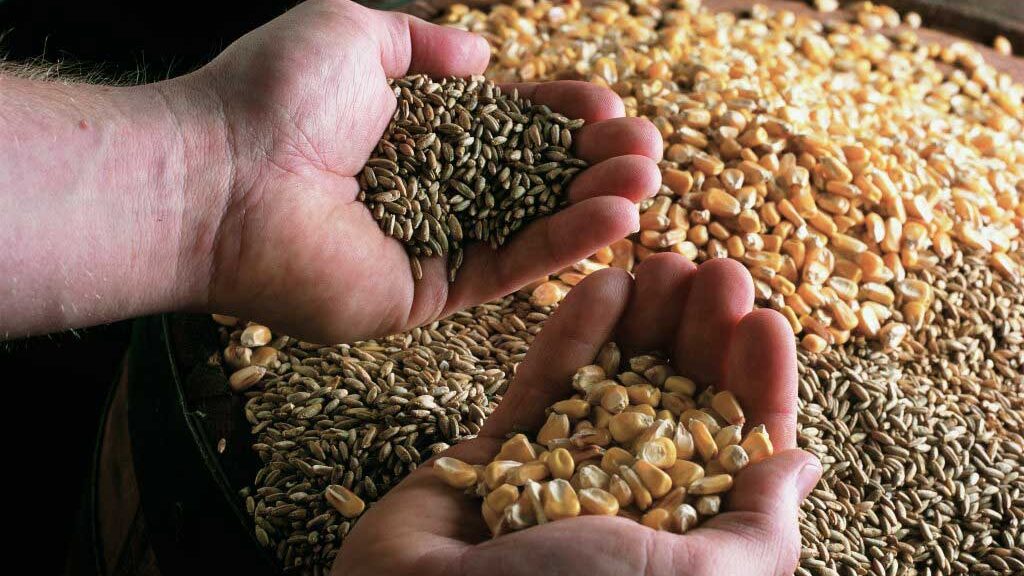
How is bourbon made?
The Mash Bill
The mash bill is the blueprint for bourbon’s flavor. This term refers to the precise ratio of grains used to create any bourbon. At 51% of the total grain recipe, corn is the main ingredient providing a sweet base, while smaller proportions of other grains like rye or wheat add distinct notes of spice and smoothness.
Each distillery has its own proprietary (often secret) grain ratios, but all adhere to the legal requirement that corn constitutes at least 51% of the total mash bill. This careful selection of grains lays the foundation for a bourbon’s unique taste.
Corn: The Heart of Bourbon’s Flavor Profile
Also known as maize, this iconically American grain brings a natural sweetness to the spirit, forming the backbone of bourbon’s flavor profile. Transforming from a simple cereal into the soul of American bourbon, corn’s sweet flavor is enhanced through the distillation and aging process. When sipped, the warmth and richness of corn is what greets the palate first.
Mashing & Fermentation
To extract the natural sugars from the cereal grains (at least 51% corn), they’re first mixed with hot water inside large vessels known as mash tuns. Using rotary paddles like big wooden spoons, this porridge-like mash mixture is agitated to release as much starch as possible from the grains.
Once ‘mashed’ the sugary, starchy liquid is then drained and transferred to another vessel known as a washback where it’s then fermented using a small portion of distillers yeast.
Over the course of several days, the yeast converts the sugars in the wash into alcohol and carbon dioxide, creating a basic beer-like liquid known as distiller’s beer or “wash” with an alcohol content of about 7-10%.
This fermentation step is crucial, as the yeast not only produces alcohol but also develops the complex, fruity flavor profile that will become even more refined through distillation and aging.
Distillation
After fermentation, the wash is transferred to a still, which is basically a large copper kettle that boils the beer. As the mixture heats, alcohol and other compounds vaporize at lower temperatures than water, allowing them to be collected separately.
For bourbon, a double distillation process is often employed, first using a column still and later a pot still, to achieve the desired strength and complexity of flavor.
The result of this refinement is a clear, high-proof distillate known in America as “white dog”. At this stage, this spirit isn’t bourbon just yet as it still needs to undergo the next crucial phase of aging.
Aging
Charred oak barrels are the unsung heroes of bourbon’s flavor. These barrels, crafted from American white oak, are charred using intense heat on the inside to catalyze a chemical reaction that enriches the bourbon. As the neutral “white dog” liquid matures, it seeps into the burnt wood, drawing out caramelized sugars and tannins. The aging process within these barrels for at least two years imparts the deep amber color, character and complexity that bourbon aficionados cherish.
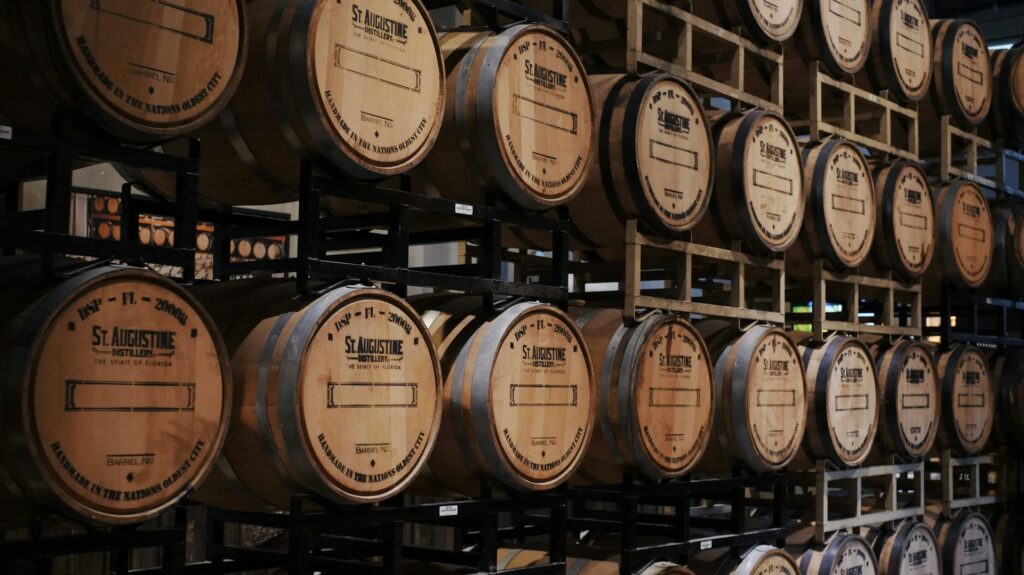
Bourbon’s Rich Flavors
Bourbon’s flavor profile is a testament to its rich ingredients and processes. American bourbon offers a symphony of tastes ranging from the sweet notes of vanilla and caramel, derived from the spirit of fermented grain to the deep undertones of oak and spice, thanks to its time spent in charred barrels. Each sip reveals a new layer, a sweet flavor or a smoky hint, that makes bourbon a continually evolving experience.
The 8 Different Types of Bourbon
Bourbon comes in 8 main types, each defined by its mash bill including;
- Straight bourbon
- Bottled in bond bourbon
- Wheated bourbon
- High rye bourbon
- 100% corn bourbon
- Four grain bourbon
- Barrell proof bourbon
- Single barrel bourbon
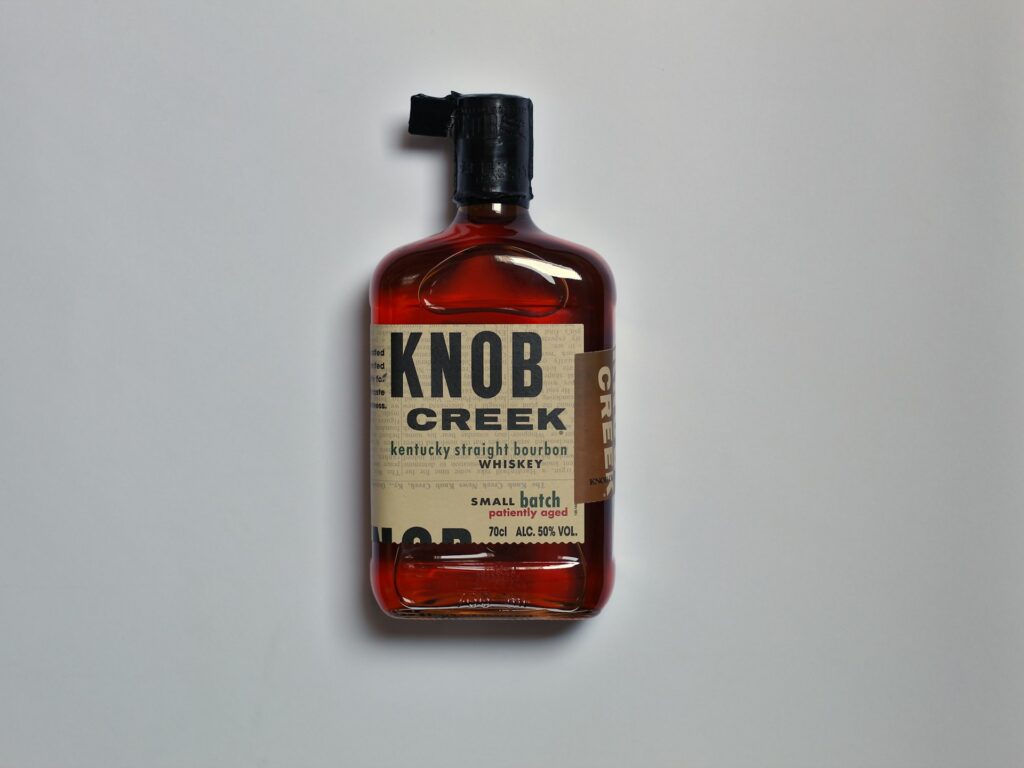
#1 Straight Bourbon
Straight bourbon is aged in charred oak barrels for at least two years. This period in the barrel is crucial, allowing the spirit to absorb flavors from the wood and mellow over time. It’s a transformation that yields a smoother, richer bourbon.
Buy Knob Creek Kentucky Straight Bourbon
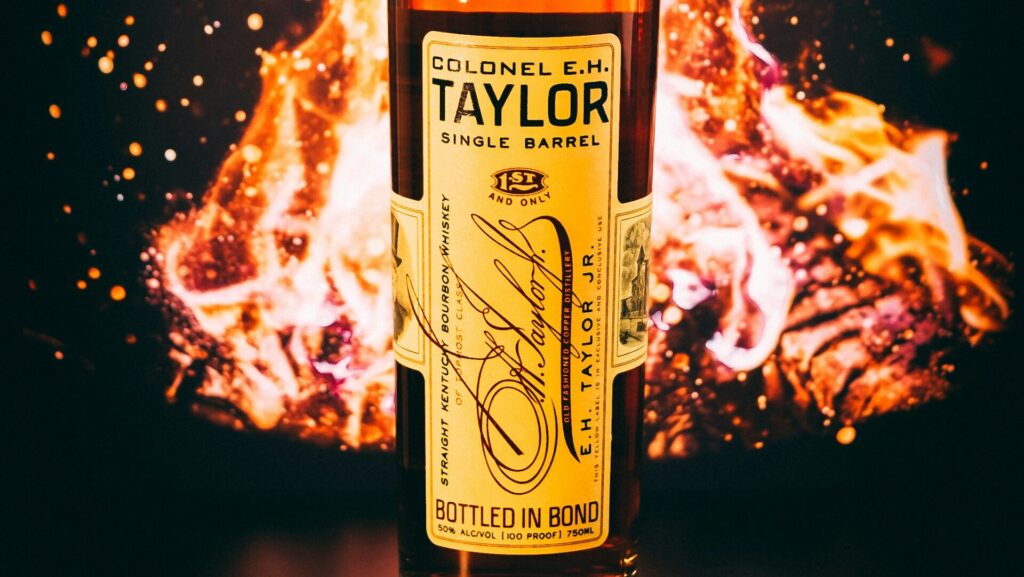
#2 Bottled in Bond Bourbon
Dating back to the Bottled-in-Bond Act of 1897, this designation requires the bourbon to be the product of one distillation season (January to June or July to December) by a single distiller at a single distillery. It must be aged in a federally bonded warehouse for at least four years and bottled at exactly 100 proof (50% alcohol by volume).
This legal guarantee ensures the bourbon’s authenticity and quality, offering a distinct, robust flavor characterized by depth and complexity. The “bottled in bond” label signifies a commitment to its transparency of craftsmanship.
Buy Colonel EH Taylor Small Batch Whiskey
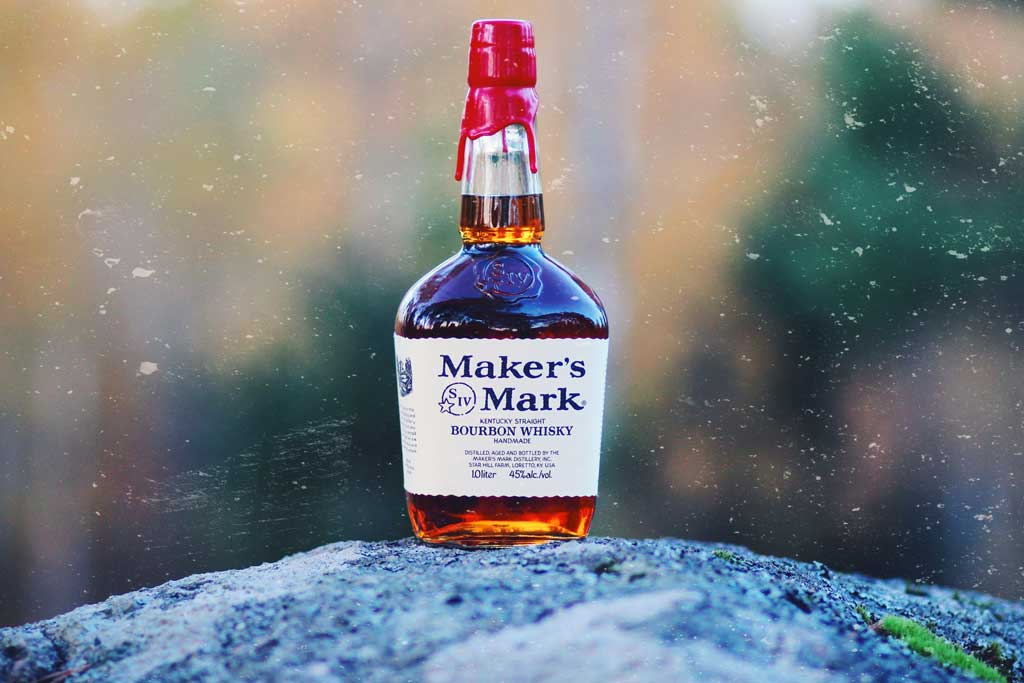
#3 Wheated Bourbon
Wheated bourbon is the smoother cousin in the family, with wheat taking the place of rye in the mash bill. This substitution results in a softer, sweeter profile, making wheated bourbon a favorite among those who prefer a gentler sip. The wheat allows the inherent sweetness of the corn to shine through, complemented by a velvety texture that caresses the palate. It’s a style that’s as approachable as it is delightful.
Buy Maker’s Mark Wheated Bourbon Whisky
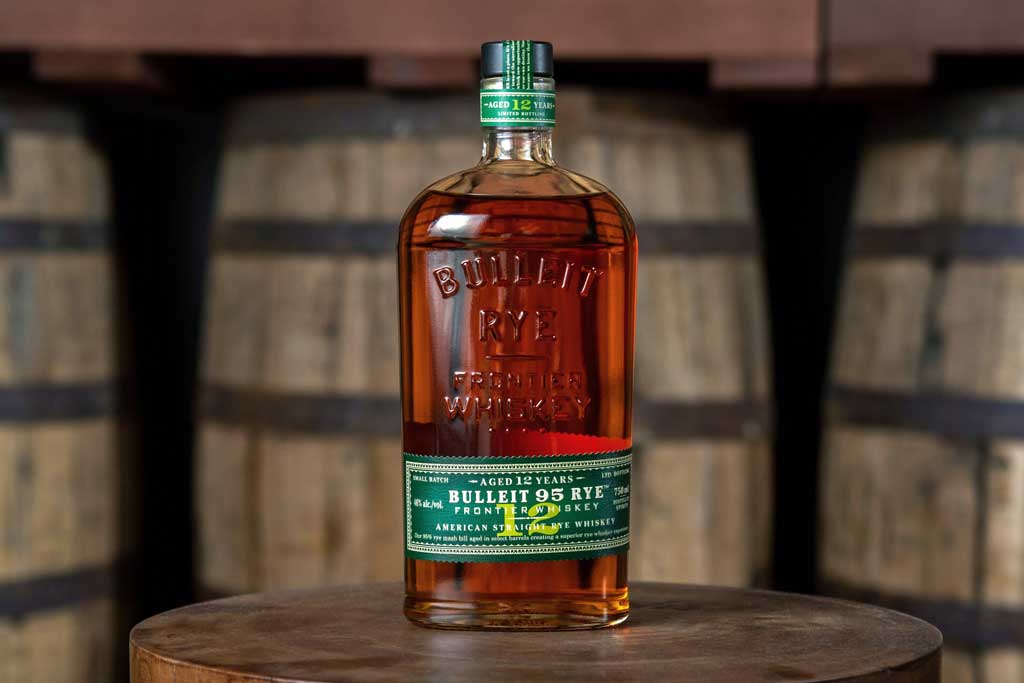
#4 High Rye Bourbon
For those who crave a stronger flavor, high rye bourbon delivers. The increased proportion of rye in the mash bill introduces a bold spiciness that balances the natural sweetness of corn. This style is characterized by its lively, peppery notes, which invigorate complexity to each taste. High rye bourbon is a spirited choice for enthusiasts exploring the more assertive side of America’s native whiskey.
Buy Bulleit High Rye Bourbon Whiskey
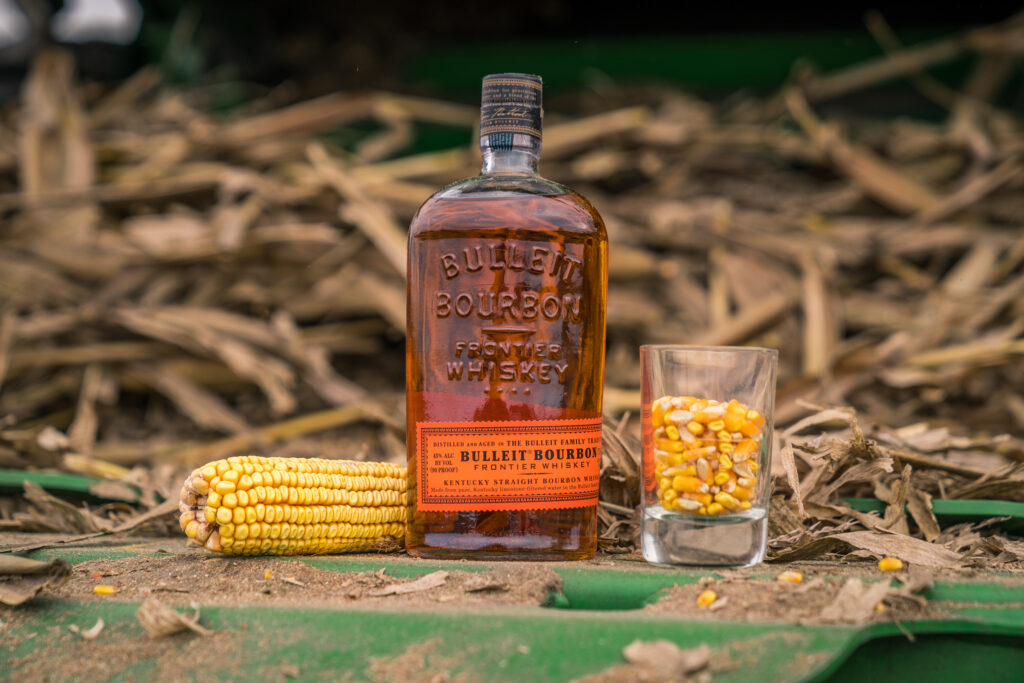
#5 100% Corn Bourbon
100% corn bourbon is a unique category of whiskey that, as the name suggests, is made entirely from corn, distinguishing it from traditional bourbons which are often a blend of corn, rye, and barley. This grain composition imparts a distinctively sweet profile to the bourbon, characterized by rich notes of vanilla, caramel, and butterscotch, making it smoother and more mellow than its counterparts.
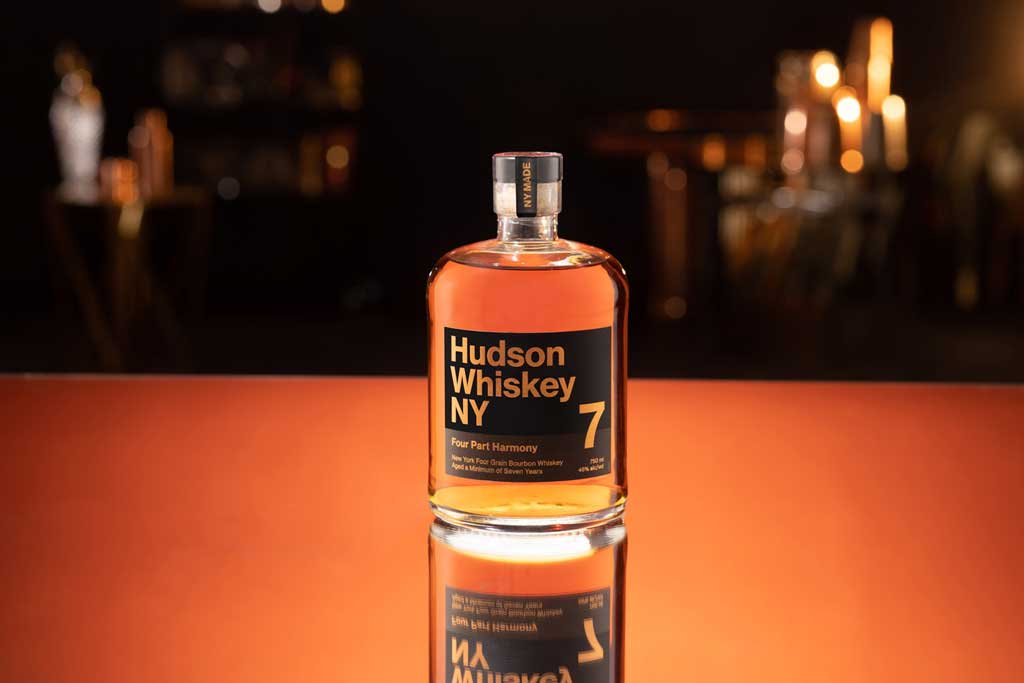
#6 Four Grain Bourbon
4 grain bourbon represents a harmonious blend of the traditional bourbon ingredients with an additional grain to create a unique profile. This variant incorporates corn, rye, wheat, and malted barley into its mash bill, each contributing its distinct flavors and characteristics.
Corn lends its sweetness, rye adds spiciness, wheat brings a soft, smooth texture, and malted barley contributes the essential enzymes for fermentation. The result is a bourbon that is exceptionally well-rounded, offering a complex symphony of flavors that range from sweet to savory, with a smoother finish compared to its traditional counterparts.
Buy Hudson Four Grain Bourbon Whiskey
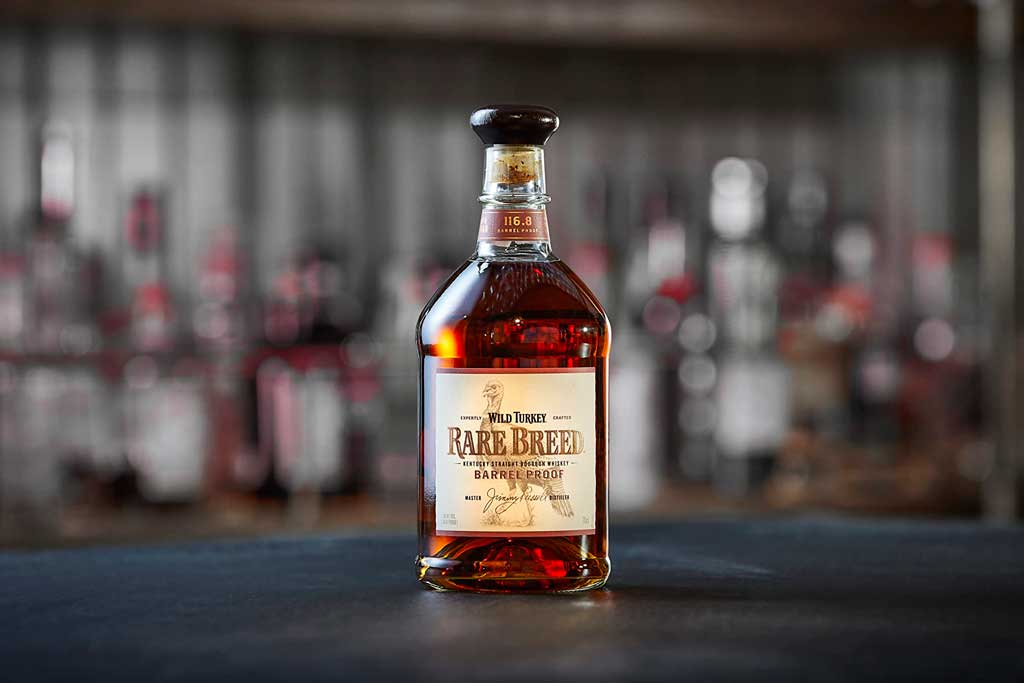
#7 Barrel Proof Bourbon
Barrel proof bourbon, also known as cask strength bourbon, refers to bourbon that is bottled directly from the barrel without any dilution, retaining its original strength and concentration of flavors. This type of bourbon showcases the spirit in its purest and most intense form, with alcohol content typically ranging from 100 proof or higher (50% to 65% ABV).
The lack of water added (dilution) before bottling means that aficionados can experience the whiskey exactly as it existed in the barrel, offering a richer, more robust taste profile that captures the essence of the bourbon’s aging process, including the deep, complex flavors and aromas developed during its time in the wood.
Buy Wild Turkey Rare Breed Bourbon
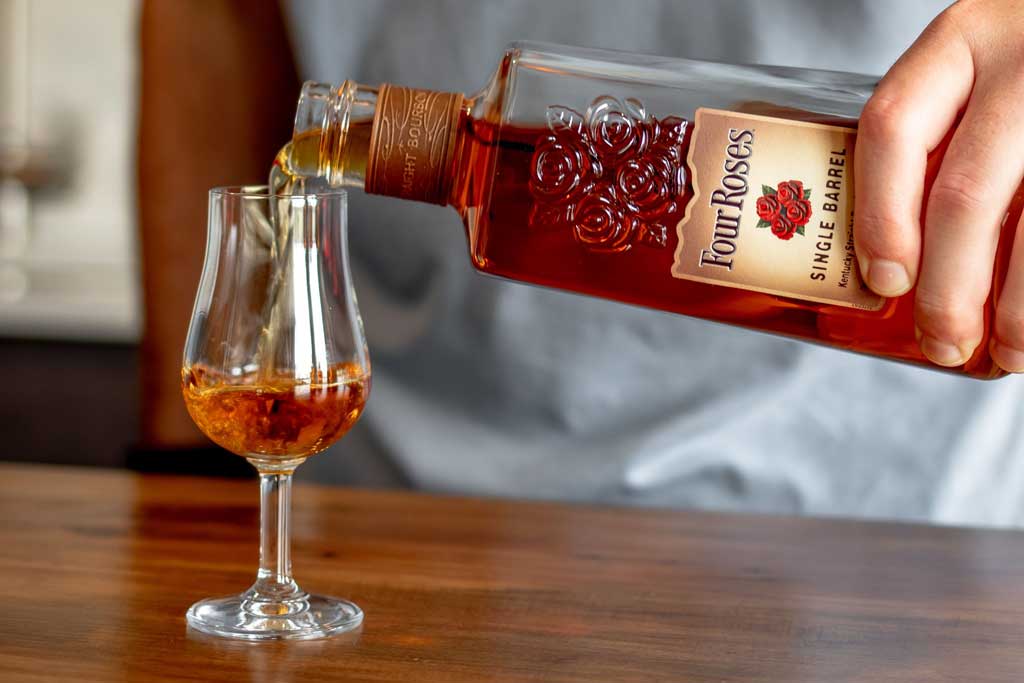
#8 Single Barrel Bourbon
Single barrel bourbon is bottled from a single aging barrel that showcase exemplary characteristics of aroma, colour and taste. Barrels selected for single-barrel bourbons are rare and are thoroughly examined by the master distiller before bottling. This is why they typically fetch a higher retail price.
This method highlights the individuality of each bourbon barrel, influenced by factors like the wood’s grain pattern and the warehouse’s microclimate. Selecting a single barrel for bottling is a way to showcase a singular, exceptional profile, offering a one-of-a-kind experience to connoisseurs who appreciate the variations that make bourbon so captivating.
Buy Four Roses Single Barrel Bourbon
A Conclusion on Bourbon Whiskey
As a subtype of American whiskey, bourbon’s high corn percentage distinguishes itself as a sweeter, smoother spirit with strong roots in the American south. From classic Kentucky-style to barrel-proof and single-barrel variations, bourbon offers an array of options for whiskey enthusiasts to explore and enjoy.
Key Takeaways:
- Bourbon must contain 51% corn in the mash bill.
- Additional cereal grains may be included such as rye or wheat.
- Bourbon always contain a small amount of malted barely to aid fermentation
- The high corn content makes it sweeter compared to other whiskeys.
- Bourbon can be made anywhere in America
- Kentucky produces 95% of all American bourbon
- Bourbon must be aged in new charred oak barrels.
- There are 8 main types of bourbon


